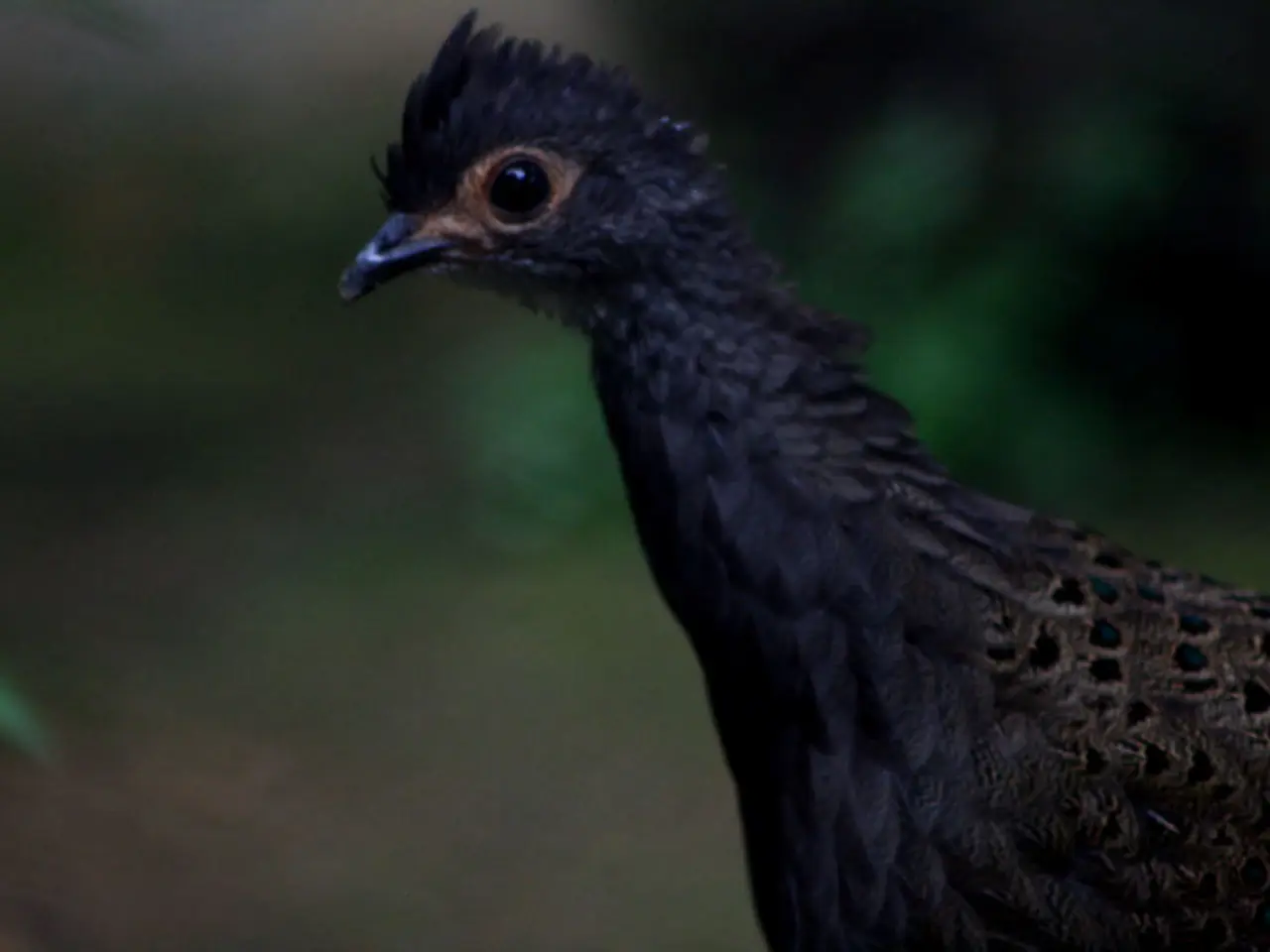Bird Reproduction: Exploring the Fascinating Mating Habits of Aviary Creatures
In the vibrant world of avian life, the courtship and mating processes of birds offer a captivating glimpse into the intricacies of the animal kingdom. From the peacock's flashy tail feathers to the intricate dances of the Birds of Paradise, these displays are as diverse as the species themselves.
A crucial aspect of bird mating is the role of sexual selection, with vivid colors in male birds serving as indicators of health and good genes. However, the mating activity itself is brief, typically lasting less than a second, while courtship and bonding can last for days or weeks.
Understanding how birds mate is essential for conservation and basic ecological research, as reproductive success is crucial for the health of a population. The majority of bird species around the world reproduce through the cloacal kiss, a process where the male deposits sperm into the female's cloaca during a brief pressing together. Some bird species, such as ducks, geese, swans, and other waterfowl, have penises to aid in sperm transfer, an adaptation thought to promote fertilization in water.
The courtship and mating processes among bird species vary widely, reflecting differences in behavior, physical traits, and reproductive strategies. Some birds use elaborate visual and auditory signals during courtship, such as intricate dances, vibrant feather displays, or complex songs. These behaviors can serve to strengthen pair bonds or function as isolation mechanisms to avoid interspecies breeding.
About 90% of bird species are socially monogamous, forming long-term pair bonds. For instance, rosy-faced lovebirds form strong lifelong bonds, engaging in mutual grooming, feeding, and roosting closely together, with clear parental roles—females incubate eggs while males provide food.
Lek mating is exhibited by some species, such as the great snipe and black grouse, where males gather in specific display areas to compete for female attention through vocalizations and combat. Females visit these leks to select mates based on male traits, gaining benefits like reduced search costs and predator risk.
Mating systems of birds vary from complex courtship displays to cooperative breeding and brood care. Some birds, like weaver birds or bowerbirds, place a high emphasis on the male's ability to build a lovely and sturdy nest.
In some species, such as the weaver bird or bowerbird, a male's capacity to build a lovely and sturdy nest can be the difference between mating and not. After mating, a female initiates egg laying, and chicks are typically brooded by one or both parents post-hatch, with support and teaching survival skills being important elements in the early life of every species.
It's worth noting that many birds can lay infertile eggs without mating, and these eggs will never hatch. Some birds engage in courtship feeding, where the male provides food to the female to strengthen their bond. All bird species share incubation duty, using body warmth to keep eggs at an appropriate temperature until they hatch.
Birds are some of the most fascinating and diverse animals on the planet, and their mating displays are no less interesting. It's hard to definitively quantify animal emotions, but scientists think birds have sex mainly to reproduce. However, hormonal reactions and pair bonding could lead to a feeling of satisfaction or an emotional attachment.
Birds do not generally stay with the same partner for life, with some being monogamous and others being seasonal breeders with multiple mating partners. Mating systems of birds vary from complex courtship displays to cooperative breeding and brood care. Birds attract a mate with song, display, behavior, and territory. Some even travel back to certain regions every year to seek out partners they recognize.
Nests are where birds deposit their eggs, and the nest-site and nest-structure can be diverse across species. It's breeding time for most birds during spring or early summer, when conditions are generally best for the task of raising chicks. Watching a how do birds mate video can help you get a live grasp of the mating ritual, from courtship to copulation, providing a fascinating look at the avian life cycle. Understanding these processes makes us realize how finely tuned ecosystems are, and how important it is to conserve natural habitats.
- Ornithology, the science of birds, delves into the intricacies of bird mating, as understanding these processes is essential for conservation and basic ecological research.
- Mating systems among bird species range from socially monogamous pairings, like rosy-faced lovebirds, to lek mating, where males exhibit in specific display areas.
- Fitness-and-exercise and health-and-wellness are crucial factors in bird mating, as males with vibrant colors often indicate good health or genes.
- In the field of birdwatching, someone might find themselves captivated by the diverse mating displays of various bird species, enriching their understanding of the animal kingdom.




